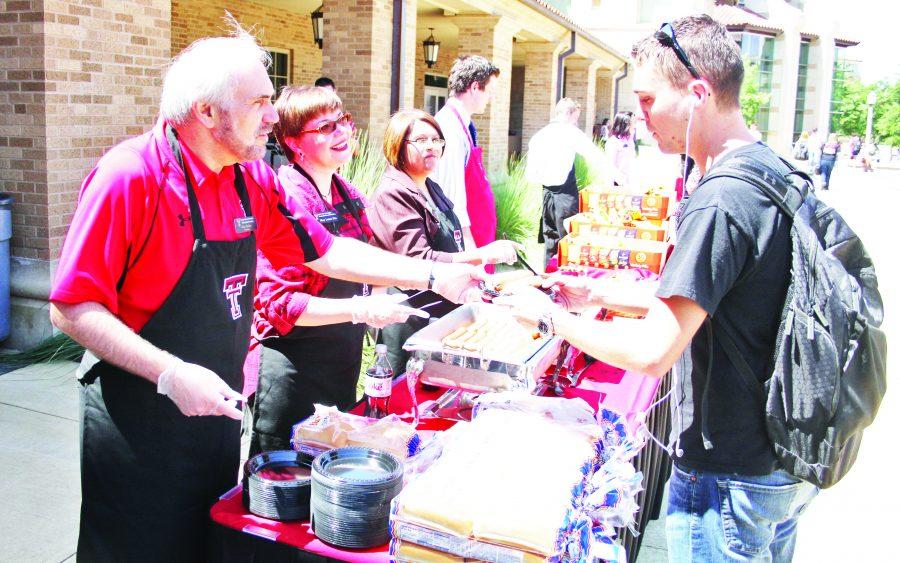Thirty-eight years after graduating from the University of Alabama, Guy Bailey may have the chance to return. This time, though, he would oversee 30,000 plus UA students as they seek degrees of their own.
At Texas Tech University, students say Bailey has put an emphasis on research, had an open-door policy with students and worked to diversify the Texas Tech student population.
Kayla Piers, a student at Tech, works closely with Bailey through the “President’s Select” program, a student ambassador organization.
“If I had to choose one word, I would say personable,” Piers said on describing Bailey. “He has an open door policy, and he really has maintained that policy. I think that’s rare to find on a lot of campuses.”
Piers said the President’s Select works closely with Bailey, travelling with him to recruit new students and athletes. She said she has learned much from the way he interacts with potential students.
“Even if someone isn’t going to attend Texas Tech, he wants to meet them and meet their parents — get to know them,” Piers said. “He has taught me to become a better listener and goal-oriented.”
Piers said Bailey, when under pressure, remains rational and shows his experience.
“He’s very calm and collected,” she said. “If something seems to be going wrong, he takes it one step at a time. I think that comes from the level of experience he has had with higher education leadership.
“Honestly, I have never heard or felt a single negative word about Bailey. He will be hard to replace,” she said.
Texas Tech SGA President Alex Alston also spoke highly of Bailey.
“I really feel that Guy Bailey has made so many positive changes here at the University,” Alston said. “He has extensively helped with our admissions process. He has also been just an amazing friend to all students. He really does care about the university, and he shows it by his actions.”
In 2012, Bailey introduced ten-year business plan to become a tier-one school, increasing enrollment and increasing diversity.
“A huge issue we had was the diversification of our student population,” Alston said. “Dr. Bailey took this issue to heart and started a university panel that worked with him to try and bring up suggestions that could help solve this. Dr. Bailey also created a group of university ambassadors, whose mission was to help admissions recruit students to Texas Tech from all over.”
Bailey increased the number of enrolled students during his time at Texas Tech. According to an article on Lubbock’s Local Fox34 website, in the fall of 2009, enrollment was at 30,000 students. By the fall of 2012, after continually increasing enrollments, Texas Tech saw a total enrollment of 32,327 students.
One of Bailey’s most prominently cited contributions, though, comes from his 10-year business plan that would ultimately land Texas Tech among the likes of elite “tier one” schools.
The plan was published this past March and included a visual stairway to tier one membership, a description of tier one schools, the benefits of developing the school to that level and the business model to land Texas Tech in the rankings.
In order to be a tier one university, a school would need to either be a member of the Association of American Universities, or have an AAU-like profile, which includes research, academic and merit-based requirements, be ranked among the top 50 universities in the U.S. News and World Report, be a member of a BCS athletic conference and be ranked in the Top 50 Carnegie Classification R/VH (research/ very high).
According to LubbockOnline.com, Bailey mentioned plans to meet Texas Gov. Rick Perry’s challenge for universities to create undergraduate programs that would cost students less than $10,000. The article states Bailey’s plan involved students taking 80 hours of coursework at a community college, then transferring to Texas Tech and taking 40 hours of upper-division courses. The plan also included “reasonably priced” online academics.
Bailey has also written roughly 100 books and articles, many of which were written alongside his wife, Dr. Jan Tillery. The books and articles mostly cover subjects related to English, linguistics, dialects and language variation and change.
Bailey took over as President of Texas Tech University in August of 2008. According to texastribune.org, Bailey receives an annual salary of $350,000. Prior to serving as University President at Texas Tech, Bailey was chancellor at the University of Missouri-Kansas City.
Overall, Alston said he has had no negative experience with Bailey’s term as university president. Alston described Bailey as having an open door policy towards students, and striving to be visible around campus.
“I believe Dr. Bailey’s greatest strength would be his will to step out of his office and be among the university population, “ Alston said. “He has this attention to detail that really helps the university strive to be among the best within Texas.”








